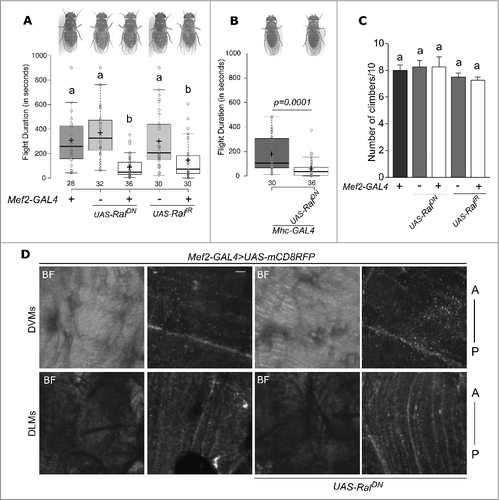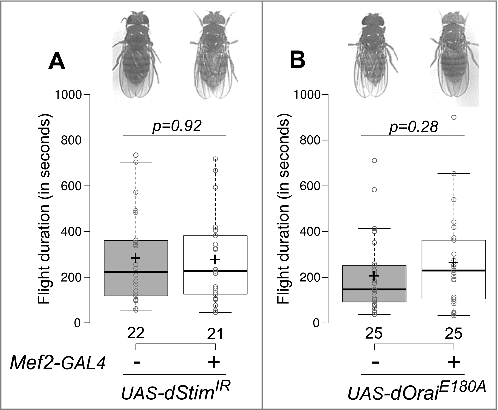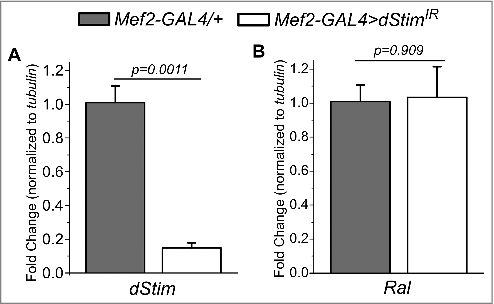Figures & data
Figure 1. Ral function is required in the muscle for flight but not climbing. (A and B) Representative images of flies from the indicated genotypes. Wing posture is normal for all genotypes tested (top). A box plot of flight durations of flies measured by single flight assay of the indicated genotypes is shown below. In the box plots, centre lines show the medians; crosses indicate the means; box limits indicate the 25th and 75th percentiles; whiskers extend 1.5 times the interquartile range from the 25th and 75th percentiles, individual data points are represented as open circles and the numbers below represent “n” for each box. Flies from two crosses were used in these experiments. (C) Number of flies, out of ten that could climb 8cm in 12 seconds of the indicated genotypes are shown as bar graphs of mean values and standard errors of mean. Alphabets over the box plots/ bar graphs represent statistically indistinguishable groups (one-way ANOVA with a post hoc Tukey's test p < 0.05). Pairwise comparisons were performed by unpaired, two-tailed Student's t-test and the exact p-values are indicated. (D) Confocal images of thoracic indirect flight muscles of the indicated genotypes. The upper and lower panels show representative images of dorsal ventral muscles (DVMs) and dorsal longitudinal muscles (DLMs) respectively. Muscle membranes are marked by mRFP allowing visualization of the fibres. BF indicates brightfield image. Orientation of the thorax is indicated by A (anterior) and P (posterior). Scale bar indicates 10µm.

Figure 2. SOCE function in muscle is not required for flight. Representative images of flies from the indicated genotypes showing normal wing posture (top) and a box plot of flight durations of flies measured by single flight assay (bottom) from flies with dStim knockdown in the muscle (A) or dOrai dominant negative expression in the muscle (B). Box plot symbols are as described for . All flies tested were from the same cross. Pairwise comparisons were performed by unpaired, two-tailed Student's t-test and the exact p-values are indicated.

Figure 3. SOCE does not regulate Ral expression in the muscle. Change in the levels of dStim (A) and Ral (B) in the indicated genotypes, normalized to tubulin as measured by qRT-PCR. Flies used were from the same cross as that for . Bars represent means and error bars, standard errors of mean of the fold change. Pairwise comparisons were performed by unpaired, two-tailed Student's t-test and the exact p-values are indicated.

